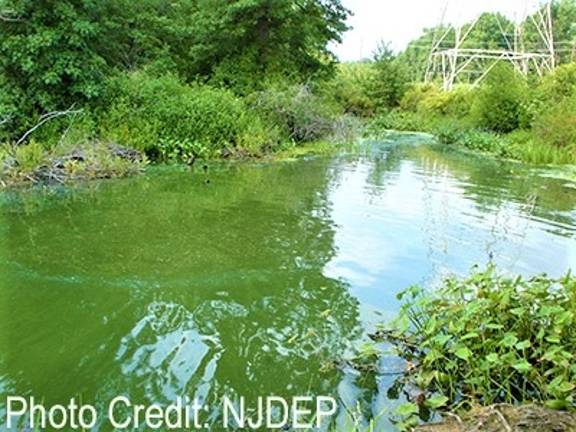Regional lakes faring better than Lake Hopatcong following harmful algal bloom

The harmful algal bloom confirmed by the New Jersey Department of Environmental Protection in Lake Hopatcong on June 27 does not appear to be causing problems in other lakes in northern New Jersey, Orange County in New York, or Pike County in Pennsylvania, officials said Monday.
Dr. Fred Lubnow, director of aquatic programs for Princeton Hydro, said that the firm is currently testing the waters of Greenwood Lake in New York and New Jersey to make sure there is no bloom of the harmful algae, which caused an advisory at Lake Hopatcong for people to not come into contact with the water there.
Princeton Hydro monitors lakes in all three states for such occurrences, Lubnow said.
The New Jersey DEP put out the advisory after aerial surveillance of the state’s largest freshwater lake showed large areas of the lake experiencing cyanobacterial blooms.
According to the advisory, people and pets should not come in contact with the water in the lake while the bloom is present, possibly causing rashes, allergy-like symptoms, respiratory irritation, gastroenteritis and eye irritations, according to the DEP.
The bloom discovered on Lake Hopatcong and a lesser bloom on Lake Mohawk in Sparta Township in New Jersey on June 17 were caused by the recent periods of heavy rainfall and then hotter than average temperatures in the region in June, Lubnow said.
While the Hopatcong bloom may continue for several weeks until it clears, Lubnow said the lesser bloom on Lake Mohawk is already showing signs of clearing.
While these two lakes experienced the harmful blooms, other lakes in the region seem to have remained clear, according to the DEP.
The blooms take place in lakes when there is a heavier than normal amount of phosphorus in the water, which serves as a nutrient for the algae, which then grows with warm temperatures, officials said.
The more of these nutrients that run off into the water, the more favorable the conditions for the harmful algae to grow, Lubnow said.
The blooms are visible and can appear on the water’s surface looking like a green paint spill or a “pea soup” consistency, according to the DEP.
The advisory led to the closing of swimming areas on Lake Hopatcong, according to the DEP.
Other recreational activities, such as boating and fishing are also advised against as long as the bloom remains.
Greenwood Lake Commission Co-Chairman Paul Zarrillo said Monday that his organization is closely monitoring the situation and that it is being “proactive” in making sure that lake is tested and in good shape for the holiday weekend.
Greenwood Lake is the second largest lake in New Jersey.
Other lakes in the region including Highlands Lake and Wawayanda Lake have not been impacted by the algae at this time, state officials said.
According to the DEP, while using watercraft in an infected lake will not transfer the harmful algae to a non-infected lake, those living on a lake with this kind of bloom should not use water from there to irrigate their lawns.
The state maintains a website where people can check for water quality problems with lakes near them at https://www.nj.gov/dep/wms/bfbm/cyanoHABevents.html.